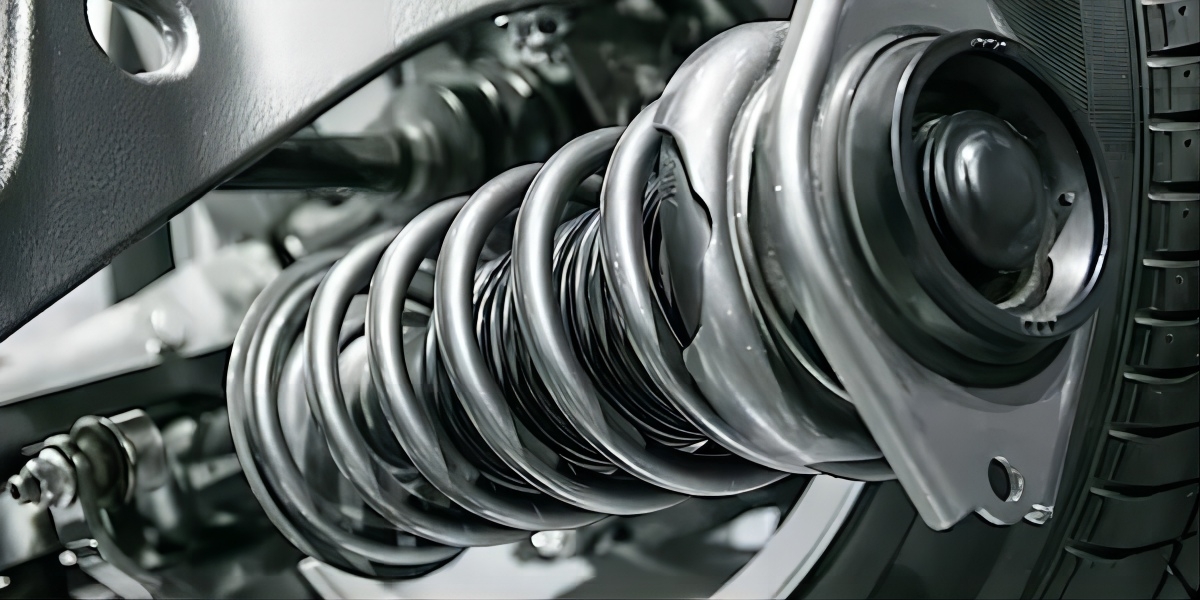Shocks Struts
- Coilovers Suspension Set Adjustment Height Struts Shocks For 94-04 Ford MustangSpecial Price $323.92 Regular Price $388.44
- Coilovers Suspension Set Adjustment Height Struts Shocks For 09-17 Toyota Corolla 09 Toyota MatrixSpecial Price $319.09 Regular Price $382.65
- Coilovers Suspension Set Adjustment Height Strut Shocks For 03-08 Toyota Corolla MatrixSpecial Price $319.57 Regular Price $383.23
- Struts Shocks Coil Spring Mount Assembly For 94-07 Ford Taurus 94-05 Mercury SableSpecial Price $146.75 Regular Price $175.98
- Quick Complete Strut Assembly Front Pair For 2006-2011 Hyundai Accent Kia Rio Rio5Special Price $154.97 Regular Price $185.84
- Complete Strut Assembly Front Quick Spring Absorber For 06-14 Honda RidgelineSpecial Price $200.11 Regular Price $239.97
- Quick Complete Strut Assembly Front Pair Left Right For Kia 04-09 Spectra 05-09 Spectra5Special Price $132.50 Regular Price $158.90
- Quick Complete Strut Assembly Front Pair For 11-14 Chrysler 200 08-14 Dodge AvengerSpecial Price $140.60 Regular Price $168.61
- Front Rear Quick Complete Strut Assembly For 05-10 Toyota SiennaSpecial Price $230.15 Regular Price $276.00
- Quick Complete Strut Assembly Front Pair For Mazda 00-03 Protege 02-03 Protege5Special Price $136.82 Regular Price $164.08
- Quick Complete Strut Assembly Front Pair For 00-05 Toyota RAV4Special Price $147.78 Regular Price $177.21
- Front Pair Quick Complete Strut Assembly Left Right For 05-07 Honda OdysseySpecial Price $180.81 Regular Price $216.83
- Rear Pair Quick Complete Strut Assembly For 04-05 Chevrolet Classic 98-03 Chevrolet MalibuSpecial Price $131.58 Regular Price $157.79
- Complete Struts Shock Coil Spring Assembly Front Pair For 03-08 Hyundai TiburonSpecial Price $157.31 Regular Price $188.65
- Quick Complete Strut Assembly Front Pair For 97-03 Toyota Avalon 97-01 Toyota CamrySpecial Price $173.80 Regular Price $208.42
- Quick Complete Strut Assembly Front Pair For 06-10 Volkswagen Passat 06-13 Audi A3Special Price $117.23 Regular Price $140.58
- Front Pair Quick Complete Strut Assembly For 02-06 Nissan SentraSpecial Price $116.26 Regular Price $139.42
- Front Quick Complete Strut Assembly Pair For 05-15 Nissan Armada 04-15 Nissan TitanSpecial Price $119.96 Regular Price $143.86
- Quick Complete Strut Assembly Front Pair Fot 05-07 Ford Five Hundred Mercury MontegoSpecial Price $141.12 Regular Price $169.23
- Front Pair Quick Complete Strut Assembly For 97-03 Toyota Avalon 97-01 Toyota CamrySpecial Price $168.17 Regular Price $201.68
- Front Rear Quick Complete Strut Assembly For 98-02 Chevrolet Prizm 93-02 Toyota CorollaSpecial Price $239.95 Regular Price $287.75
- Quick Complete Strut Assembly Rear Pair For 09-12 Toyota VenzaSpecial Price $157.41 Regular Price $188.77
- Quick Complete Strut Assembly Front Pair For 2005-2014 Nissan FrontierSpecial Price $112.63 Regular Price $135.07
- Front Quick Complete Strut Assembly For 08-10 Honda OdysseySpecial Price $176.60 Regular Price $211.78
The springs on your vehicle react to bumps, ruts, and other road irregularities, cushioning the impact. Struts and shocks control spring movement, isolating the cabin from vibration, preventing excessive body movement, and keeping the tire tread in contact with the road, for optimal traction and control. Your OE shocks and struts are fine for cruising, but don’t have the damping calibration to provide the stability necessary for performance driving. Our performance shocks and struts control suspension motion at speed so you have the traction and control you need to go faster and corner harder. Struts is a very important mechanical device, which can provide effective damping and shock absorption functions, making transportation more stable and comfortable.

Functions of Shock Struts
- Provide damping: Shock Struts control the movement of the spring by providing damping to reduce the bumps and shakes encountered by the vehicle during travel.
- Reduce vibration: Shock Struts can absorb the shock and vibration encountered by the vehicle during driving, thereby reducing the shaking and shaking of the vehicle body.
- Increased comfort: Shock Struts improve passenger comfort by reducing body vibration and shaking.
- Improve stability: Shock Struts can increase the stability of the vehicle, reduce the suspension response of the vehicle in unexpected situations, and improve driving safety.
In short, the main function of Shock Struts is to improve driving safety and passenger comfort and to extend the service life of various parts of automobiles or other means of transportation.

Components of a Shock Strut
- Piston: A metal rod that moves up and down inside the shock strut cylinder, creating resistance to movement.
- Cylinder: A steel or aluminum tube that houses the piston and contains oil or gas.
- Valving: A system of small orifices that regulate the flow of oil or gas within the cylinder.
- Spring: A coiled spring that supports the weight of the vehicle and helps absorb shocks.
- Mounting plates: Metal plates that connect the shock strut to the suspension and frame of the vehicle.
- Boots: Flexible rubber covers that protect the shock struts from dirt, dust, and debris.
- Bump stops: Rubber bumpers that prevent the shock strut from bottoming out when fully compressed.
Together, these components help to control the movement of the suspension system and dampen the effects of bumps and vibrations on the vehicle. The exact design and configuration of a shock strut may vary depending on the specific application and manufacturer.







